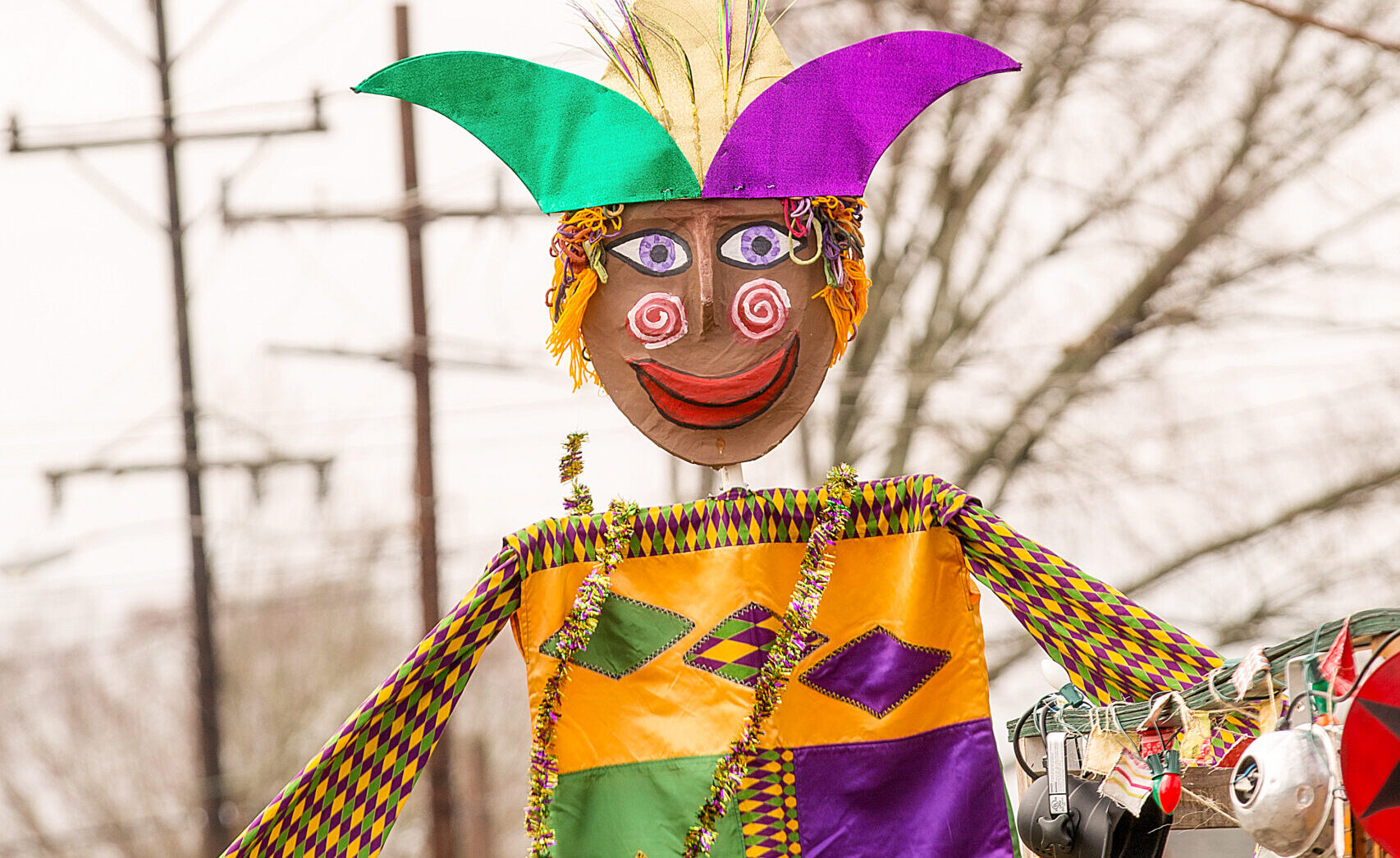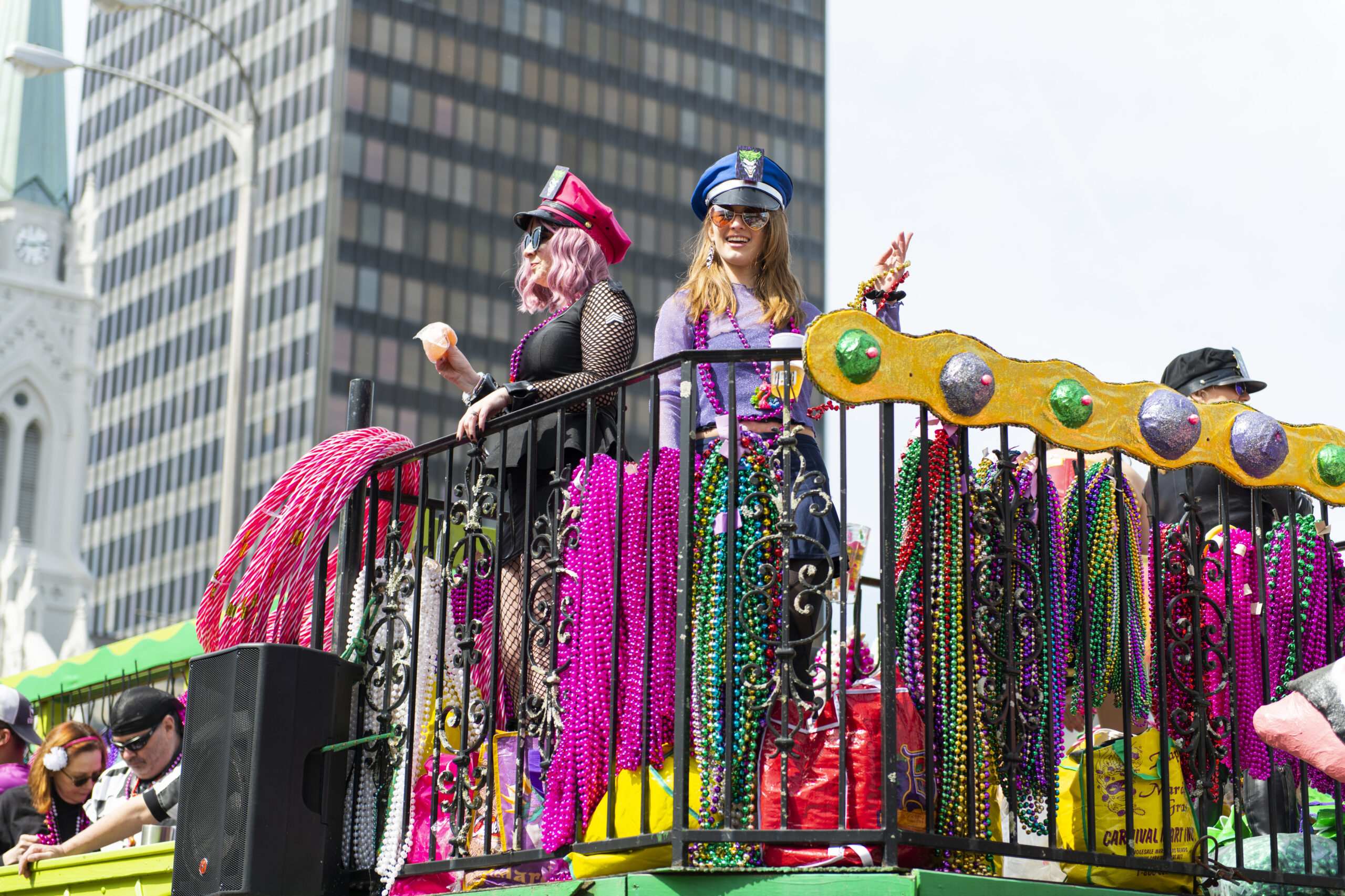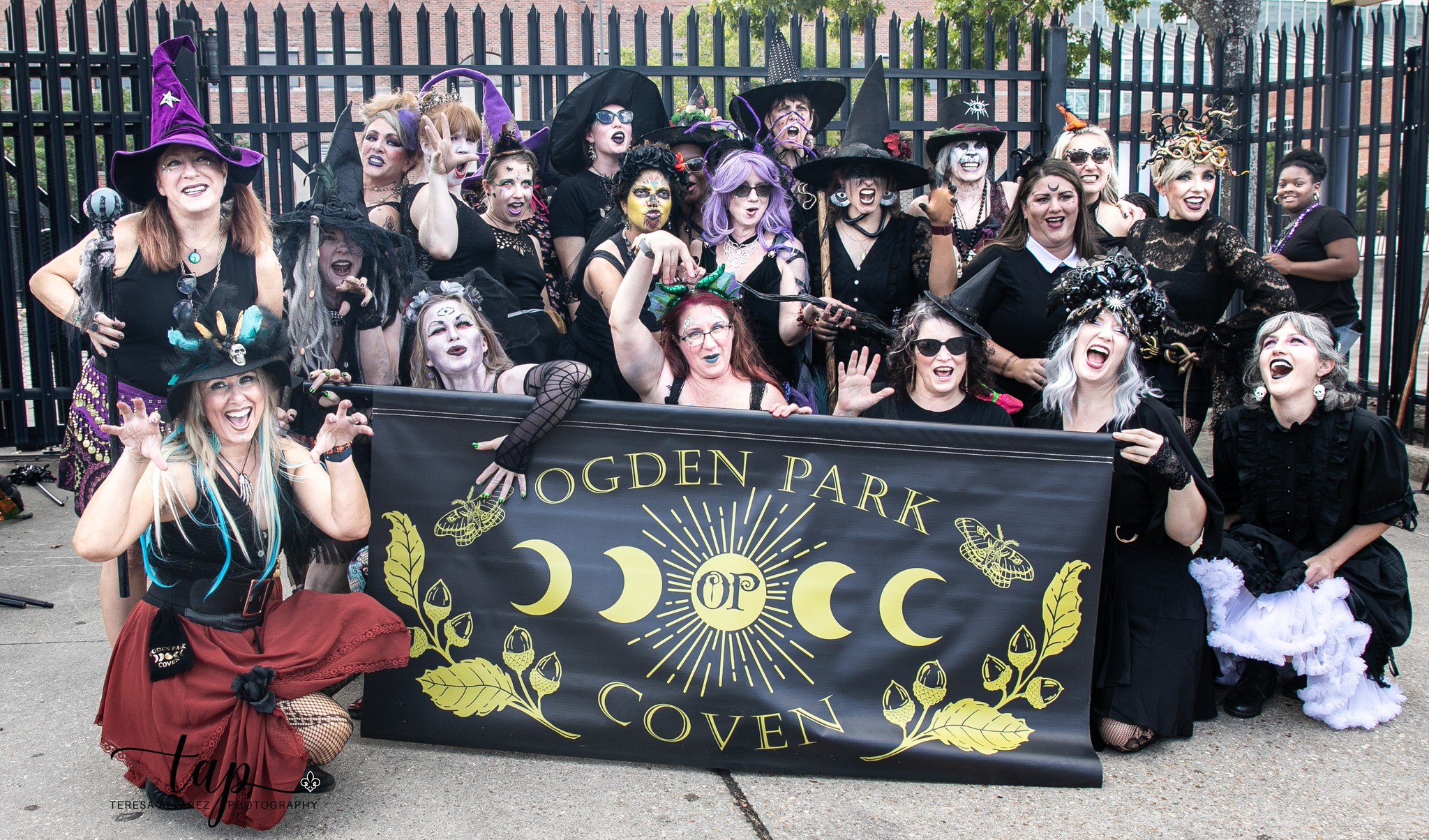
Baton Rouge’s Carnival culture continues to grow, with a new parade and fresh festivities for 2024
Julie and James Crow didn’t know much about Mardi Gras when they moved to Baton Rouge from Wisconsin about 10 years ago. But by the end of their first year here, they couldn’t get enough of Carnival.
After wondering why there was no parade in their neighborhood, they are now the central organizers of a brand-new one: the Krewe of Shenandoah. The 32-unit parade will include floats, marching bands and other performers. It is set to roll for 2.9 miles on Feb. 12, the night before Fat Tuesday—meaning the city will finally have a true Lundi Gras parade.
“This is the parade that’s going to close out Mardi Gras in Baton Rouge,” says Julie, who owns a financial planning business with her husband, James.
|
|


Over the past several years, Mardi Gras festivities have been on the rise around the Capital City.
Two other new parades, Mid City Gras and the Krewe of Oshun, were formed in 2018 and 2020, respectively.
As both of those groups have continued to grow, new dance troupes and marching krewes have popped up alongside them. It all builds on the traditions of long-running events like the Krewe of Southdowns parade and arguably the most popular Mardi Gras celebration in the Capital Region, the Spanish Town Mardi Gras Parade that takes place the Saturday before Fat Tuesday.
The Crows consider themselves true connoisseurs of the season. They do their best to attend most Baton Rouge parades, as well as a few in New Orleans. They say the Krewe of Shenandoah will echo the family-friendly, non-political vibe of Southdowns.
Its inaugural theme will be “Par for the Course,” harkening back to Shenandoah’s origins as a golf development more than a half- century ago.
They have made an effort to get everyone in the community involved, from encouraging residents to donate throws and floats to having local kids paint the krewe’s logo on golf balls to be handed out during the parade. Becky Harger, the daughter of Teddy Harger—an original developer of Shenandoah—is the founding queen of the parade. The Crows say everyone from the homeowners association to local businesses have embraced their efforts.

Across town, Mid City Gras is expanding its own celebration of community culture—with the return of its ball for the first time since before the pandemic.
With more than 500 attendees expected, the ball has outgrown its original home, a Florida Boulevard building managed by the East Baton Rouge Council on Aging. The Jan. 20 event is moving to Gallery 14, an 8,600-square-foot historic-warehouse-turned-modern-venue near Electric Depot.
This year’s Mid City Gras parade encompasses about 50 krewes and 1,200 individuals. Even as it has grown, its mission has stayed the same: to “create an inclusive event to celebrate Mid City,” says Twanda Laurant-Lewis, Mid City Gras board president.
“We bring a creative energy that embodies what Mid City is,” says Laurant-Lewis, who works as a consultant and as the vice president of social justice initiatives at United Way of Southeast Louisiana.
One of the newer additions to Mid City Gras is the Ogden Park Coven, a not-so-wicked group that dances its way through various events throughout the year.
The all-ages, inclusive dance troupe formed in 2020, priding itself on its laid-back approach to performing. The group doesn’t have an audition process and practices easy choreography that president Charlie Chavez says anyone can learn.
As long as a member can reasonably call their outfit “witchy,” then it works. It harkens back to a celebration of individuality that Chavez, a retired contractor who works the front desk at the YMCA, and vice president Christina Armistead both feel is at the core of Mardi Gras.

The Ogden Park Coven, which also danced in the Fifolet Halloween Parade for the first time this year and marches through Ogden Park on Halloween every year, does its best to get onlookers involved in its routines. Last fall, it invited kids dressed up as Wednesday Addams to join in their recently added dance inspired by Netflix’s Wednesday.
Armistead, an LSU English professor, thinks about her visits to New Orleans with her family for Mardi Gras. She says she usually doesn’t really know any of the people she watches the festivities next to.
And that’s the draw of staying in Baton Rouge for the community parades: attending an event for the neighborhood that’s orchestrated by the people in that neighborhood. It’s an experience where you’re “dancing for your neighbors,” Armistead says.
“The parade is for the community,” she adds. “It’s all of the fun (of a New Orleans Mardi Gras)—and none of the (logistical) nightmares. … It’s more relaxed.”
|
|
|

